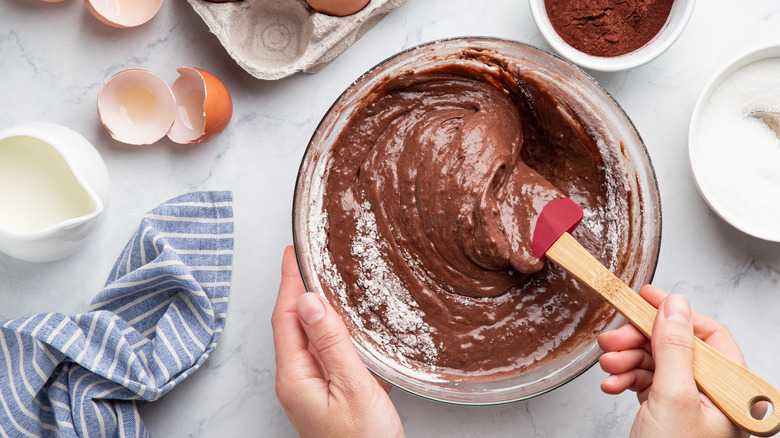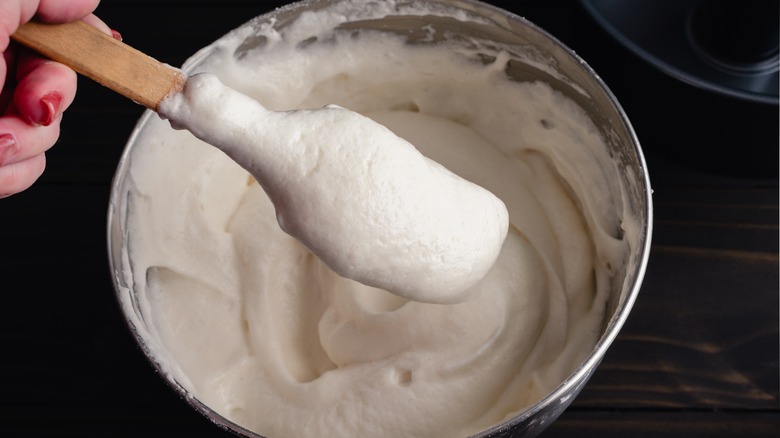How To Use The J-Fold Technique When Baking
Mastering the art of folding a delicate batter without knocking out all that precious air is vital when making a dish like a cheese soufflé, Genoise sponge, or chocolate mousse. This is because the trapped air that's been whipped into the ingredients is essential to encouraging a lofty rise and delectable feather-light texture. Fold your batter wrong and you'll be dealing with a deflated dessert. Fortunately, there's a simple technique, known as the J-fold, that can help you incorporate your ingredients into a whipped batter without losing its light and fluffy consistency.
As the name suggests, you're going to fold your egg whites into your batter using a spatula in a motion that follows the flow of the letter J. Begin by cutting through your mixture (from the top of your bowl to the middle) with the edge of your spatula; imagine the fine edge is like the flat bladed knife that you'd use to combine milk into dry scone ingredients. Then, as you round the curve of the J, you're going to gently turn the spatula so it can scrape the bottom of the bowl and scoop up the batter before slowly depositing it back on itself. Finally, turn the bowl and repeat the process again until you've successfully incorporated all your egg whites or dry ingredients into the wet mixture in batches, leaving no streaks behind.
Folding is a gentle technique
Folding is the process of incorporating a light-weighted ingredient, such as egg whites, aquafaba, whipped cream, or sifted flour, into a heavier mixture, like beaten eggs and sugar. This gentle technique is far removed from the vigorous process of creaming softened butter and sugar together, where a little elbow grease is heartily welcomed. You need to exercise a temperate touch here to retain that air and safeguard the light texture of a meringue, the fluffy middle of a Japanese soufflé pancake, or the soft center of a cloud omelet.
If your mixture is particularly thick and you can't seem to fold a large and voluminous batch of egg whites through it because of its stiff texture, it can help to stir a very small amount of the lighter ingredient into the original batter first. This loosens it up just enough so you can easily incorporate additional batches at speed. Just be mindful to run your spatula around the entire bowl a couple of times to guarantee that every bit of the batter is evenly distributed through the mixture. Another tip is to ditch your wooden spoon in favor of a large metal spoon or spatula — the thicker edge of a wooden utensil can knock out more of those precious air bubbles, resulting in a collapsed cake or a soufflé that resembles a pancake.

